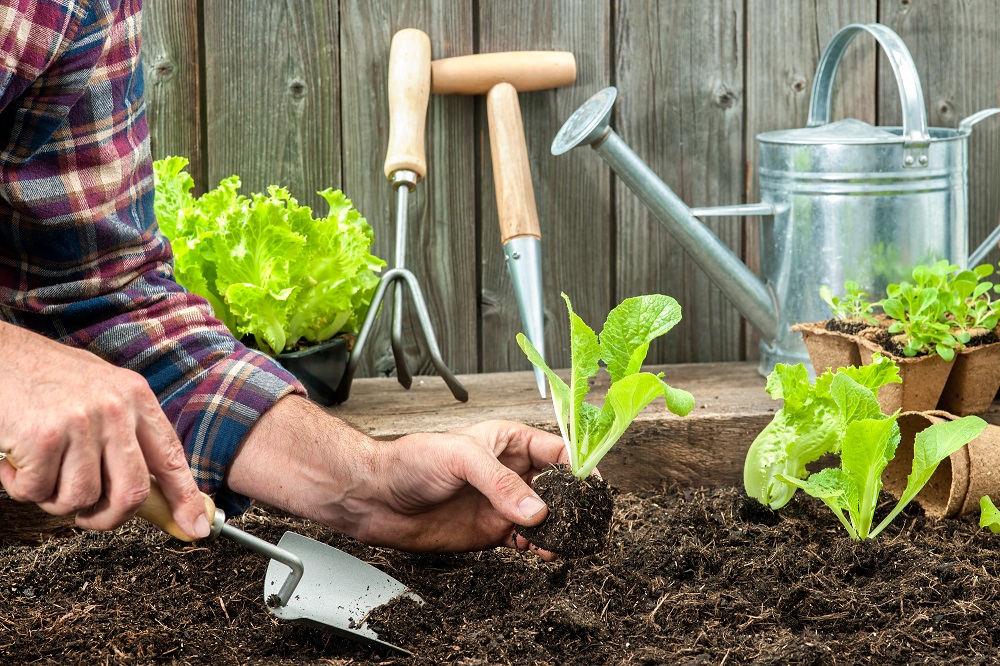- Home
- Blog
- Healthy Eating for Wellness
- 4 easy-to-grow vegetables for beginners
4 easy-to-grow vegetables for beginners
Written by Guest post
on Wednesday, 23 September 2020.
Tagged: health, healthy eating, healthy lifestyle, nutrition, vegetables

Many of us would love to grow our own veggies but we either have a brown thumb or absolutely no clue how to do it! I love growing my own vegetables and herbs, and in this post I’ll give you the heads-up on four easy-to-grow varieties.
A rewarding activity
There is no better feeling than growing your own vegetables. It’s not only exciting, it’s also healthy and rewarding. Often taking that first step is what holds most people back.
Choosing which veggies to grow and learning what works best for your climate is never easy.
The best way to start
In the beginning of your gardening career, it’s important to start with the easiest produce. These successes will encourage you to stay engaged and keep learning. Save your favourite produce till next season when you have a little more confidence and knowledge.
How I started
When I first started, I had a small veggie patch and before long my whole garden was a veggie garden. The four, easy-to-grow, crops listed below have a short growing time and require little maintenance, making them perfect for a beginner gardener.
First decide where to locate your veggie patch
When deciding where to put your veggie patch, make sure you pick a part of your garden that receives sun, but also has some shelter. There are some exceptions to this rule which I’ll talk about later, but as a general rule of thumb, this is the best way to start. Your soil quality is another important factor, but chances are, if plants are already growing well, there shouldn’t be a problem.
How to prepare the soil
Once you’ve picked a spot, you need to prepare the soil. This is done by removing weeds and aerating the soil, by loosening it up. Make sure there’s enough space as you don’t want your plants cramped together. Check on the seed packets for their recommended minimum distances.
Four easy-to-grow herbs and veggies
1. Basil
Basil is a great herb to grow as it's extremely versatile and tasty. Sow your seeds in a small area that gets lots of sun. When basil reaches 15 to 20 cm in height, you can start removing the top leaves of the plant. This will cause it to divide into two and results in bushier growth. This is a common practice and done by many gardeners when growing hedges.
Basil is best harvested in small amounts throughout the growing season. Pick a few leaves from each plant - this will encourage the plant to grow and can provide ongoing produce. If you are going to harvest larger amounts, then it's best to do it from the top down. Try not to harvest more than one third of the basil at once. After the growing season ends (depending on where you live), you might want to fully harvest the basil and start again next season. This is done by cutting the stems to the ground.
2. Parsley
Parsley is another great herb and has countless uses in the kitchen. Its seeds enjoy warm soil. A perfect way to give parsley a little head start is to plant it in a pot and place it on a sunny windowsill. If your soil is warm, sowing directly into the ground isn’t a problem. Optimal growing conditions for parsley are rich soil and indirect sunlight.
3. Potatoes
Growing potatoes is fabulous because their harvests are so bountiful. Plant them in the ground or even a box. When the first leaves sprout, you should cover these with soil. This accelerates their growth for the next few weeks. Potatoes are a perfect set-and-forget veggie. They take roughly 3-4 months to grow before they are ready for harvesting. When harvest time comes around, it's best done with a pitch fork. Dig around the outer edges of the plant carefully and lift the plant out of the soil. It’s like a little treasure chest and something that is very exciting.
4. Lettuce
Lettuce can be sown directly into the garden, planting the seeds 60 to 70 mm deep. Make sure you follow the directions on the packet for spacing. Lettuce is perfect for beginners as it's simple to maintain, easy to harvest and grows quickly. Lettuce grows best in partial shade, so make sure you pick a spot in your garden that suits these characteristics. Once it's established, consistent watering is key, and mulching the soil will help maintain moisture and boost growth.
 Harvesting lettuce leaves can be done after established leaves have formed. If you’re after top quality, I’d say the earlier the better. If you allow lettuce to grow for too long, its leaves become chewy and bitter. To partially harvest, you can pick the outer leaves which can be a perfect addition to a dinner dish. For a full harvest, chop the plant at the soil line.
Harvesting lettuce leaves can be done after established leaves have formed. If you’re after top quality, I’d say the earlier the better. If you allow lettuce to grow for too long, its leaves become chewy and bitter. To partially harvest, you can pick the outer leaves which can be a perfect addition to a dinner dish. For a full harvest, chop the plant at the soil line.
The bottom line
If you want to grow your own food, starting with easy-to-grow varieties is the key. You’ll gain confidence and knowledge, as well as the satisfaction of being able to eat your own produce.
Tristan is a writer from Sydney Gardeners and is passionate about sustainability and the environment. His passion has grown from his experience working in nature.
Jemma O'Hanlon
The Good Stuff
The Boring Stuff
© 2025 Foodwatch Australia. All rights reserved
Website by Joomstore eCommerce





